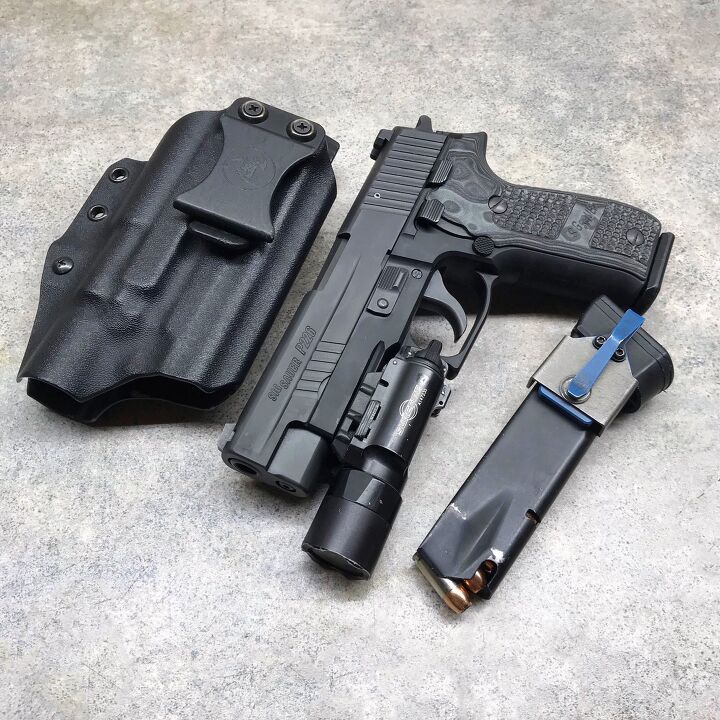When carrying a concealed firearm, it’s fairly normal to keep things exactly how they are once things are set up. It’s important to keep consistency but one aspect that is overlooked fairly often is the overall health of self-defense ammo. I’ve met a number of people with great looking concealed carry guns, but once they pull the magazine out, there’s a number of damaged rounds with some even having signs of bullet setback. There are a few different things to look for when determining the overall condition of your self-defense ammo. Let’s dive into the different things to look for when reviewing your carry ammo.

What To Look For When Checking Self Defense Ammo
It’s always important to check your carry ammo from time to time, but certain gun owners will have to check their ammo more than others. If you carry a revolver daily, there’s a good chance your ammo will last and be in a better state than those who carry a semi-auto handgun. Typically, revolvers can be checked by opening the cylinder and the individual doesn’t even have to touch the rounds to inspect if the gun is loaded. With semi-auto guns, typically people will drop the magazine to make sure it is full and then press check the gun before leaving or taking the gun out in public.

Over time, dropping the magazine and then reinserting it can take its toll on self-defense rounds. I’ve met a fair number of people who unload their guns once they get home because they have children or it’s normal for them. Personally, I keep my guns exactly how they are as much as possible to keep it consistent. Unloading and reloading your gun every time will add a tremendous amount of stress on the top two rounds of the magazine. After a while, this can start to create deformities in the bullets from the feed ramp and entering the chamber. Bullet setback is probably the most well-known issue that comes from loading in the same round time after time.

What is Bullet Setback?
Bullet setback is where the round is continuously hit into the chamber time after time without being rotated around. Putting the stress of loading the round into the chamber over and over will start to push the bullet further into the casing as time goes on. Inside the round, this will pack the powder charge tighter over time which will create dangerously high pressures when the bullet is set off inside the chamber. If you shoot a round that has been severely set back into the casing, there’s a good chance you will have the case rupture inside the chamber. Typically this causes damage to the handgun as well as yourself in most cases.

The round on the left has a bullet setback where the round on the right is a normal round in good condition.
A fairly easy way to check for bullet setback is to grab a micrometer or sometimes even a small ruler and just measure the round. Often times there are minimum overall length measurements right on the box or on the company’s website. If the round happens to be smaller than the minimum overall length, it’s probably time to retire the round and replace it with a new one. It’s a rather small way to keep safe and ensure your gun is in the best condition possible if the time comes where you need to defend yourself.

The bottom round is starting to have bullet setback so now is when you start to check the overall length.
How To Avoid Bullet Setback
Bullet setback is a fairly scary thing to have happen, but there’s a really simple way to ensure your carry ammo doesn’t fall victim to bullet setback. Typically, I will rotate my carry ammo in the magazine every 3-6 months depending on how beat up it gets. I put the worn ammo down at the bottom and then load up the remaining rounds to ensure I have fresh carry rounds at the top of my magazine. Usually, this will only be a one-time thing for carry ammo and after that, it’s time to buy a new box of self-defense ammo to carry. In the big picture of carrying concealed, a box of carry ammo is a relatively cheap way to have peace of mind when you carry a gun every day.

Overall Thoughts
Checking the overall condition of your self-defense ammo is often something many of us forget to do. In reality, though it’s one of the easiest ways to ensure you have a dependable gun on your body at all times. It’s never fun buying a new box of self-defense ammo but it’s fairly inexpensive to give the user peace of mind knowing they won’t have any issues with their carry ammo in their gun. Often times, I will shuffle rounds in my magazine one time and then swap out the ammo for fresh rounds. Let me know what you guys do to maintain your carry ammo in the comments below. If you have any questions feel free to contact me on my Instagram page @fridgeoperator. Stay safe out there.
TFB’s Concealed Carry Corner is brought to you by GLOCK

 Your Privacy Choices
Your Privacy Choices
